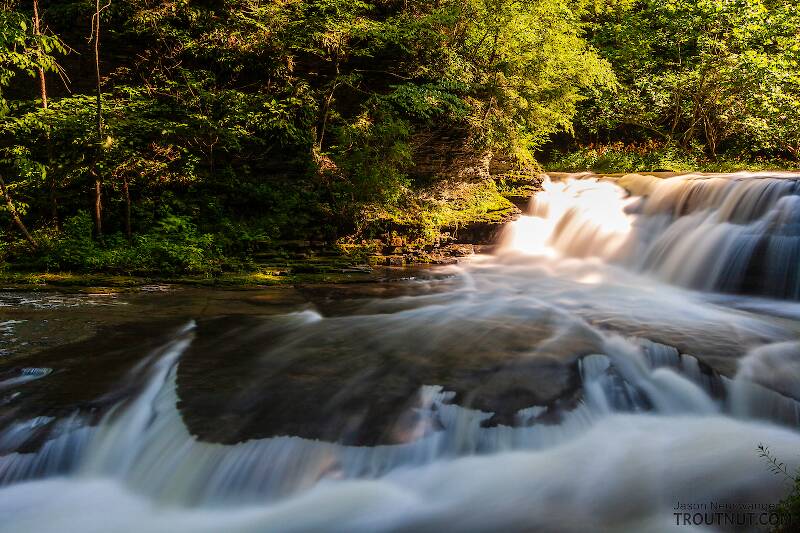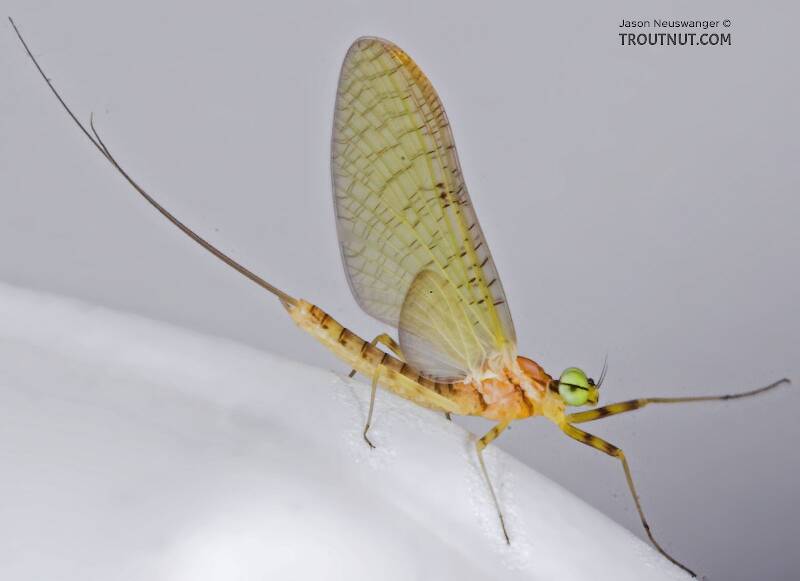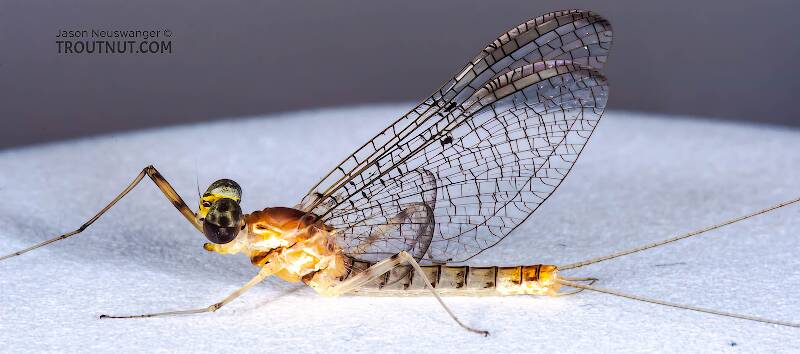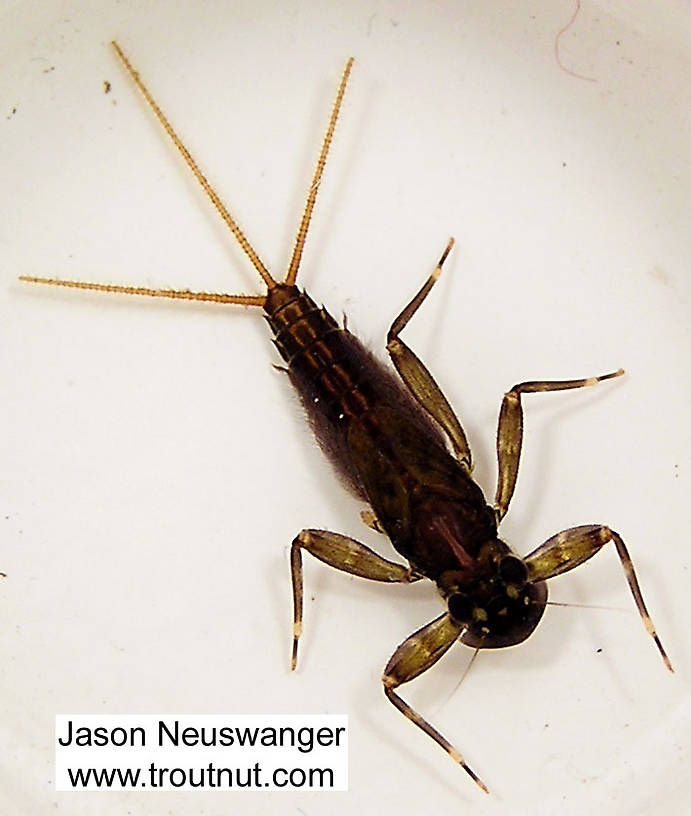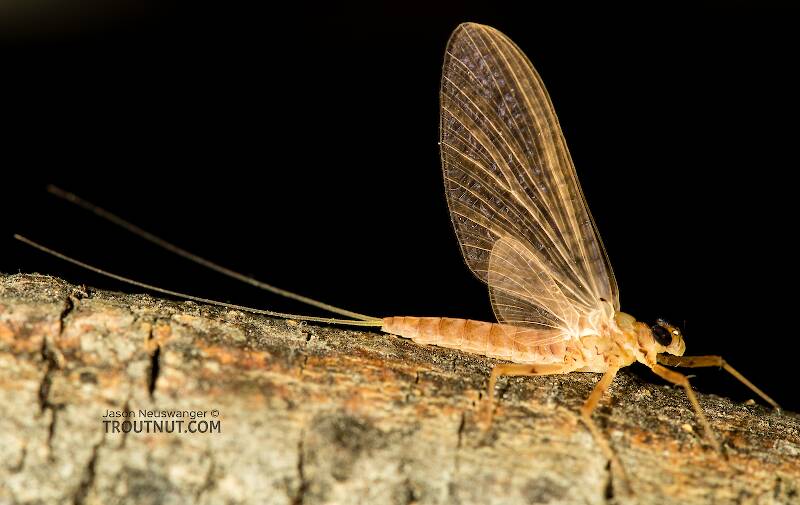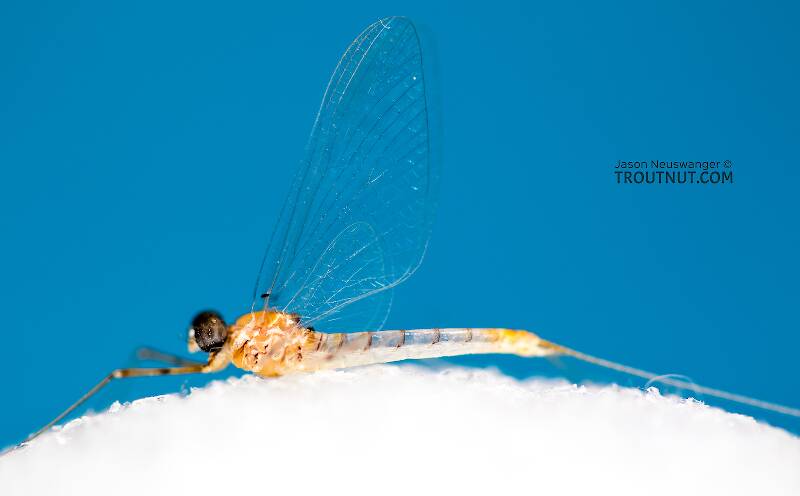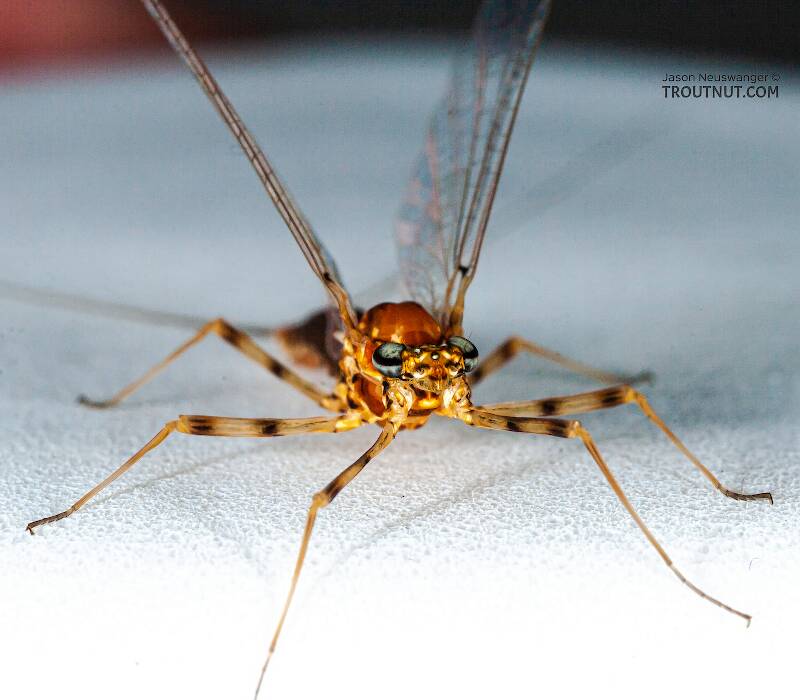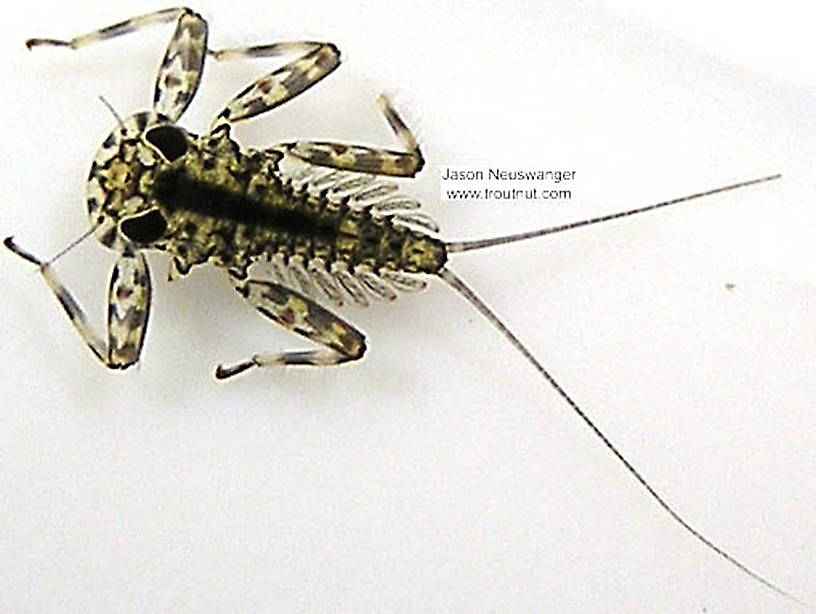
Hex Mayflies
Hexagenia limbata
The famous nocturnal Hex hatch of the Midwest (and a few other lucky locations) stirs to the surface mythically large brown trout that only touch streamers for the rest of the year.
Featured on the forum

Troutnut is a project started in 2003 by salmonid ecologist Jason "Troutnut" Neuswanger to help anglers and
fly tyers unabashedly embrace the entomological side of the sport. Learn more about Troutnut or
support the project for an enhanced experience here.
Salmon Spinners
Like most common names,"Salmon Spinner" can refer to more than one taxon. They're previewed below, along with 9 specimens. For more detail click through to the scientific names.
Mayfly Genus Stenacron
These are very rarely called Salmon Spinners.
The species in this genus were formerly classified in Stenonema. See the genus Maccaffertium for details. Only one species, Stenacron interpunctatum, is important to fly fishermen. See its page for details.
See 5 more specimens...
Mayfly Species Epeorus albertae
These are very rarely called Salmon Spinners.
This is one of the two most common Western species of Epeorus, and its spinner falls can be important.

This specimen keys to the Epeorus albertae group of species. Of the five species in that group, the two known in Washington state are Epeorus albertae and Epeorus dulciana. Of the two, albertae has been collected in vastly more locations in Washington than dulciana, suggesting it is far more common. On that basis alone I'm tentatively putting this nymph in albertae, with the large caveat that there's no real information to rule out dulciana.
See 10 more specimens...
Mayfly Species Epeorus vitreus
These are very rarely called Salmon Spinners.
This is the second most common Epeorus species in the East and Midwest. Most anglers will encounter sporadic hatches of Epeorus vitreus once in a while, and sometimes a more concentrated emergence causes a good rise of fish.
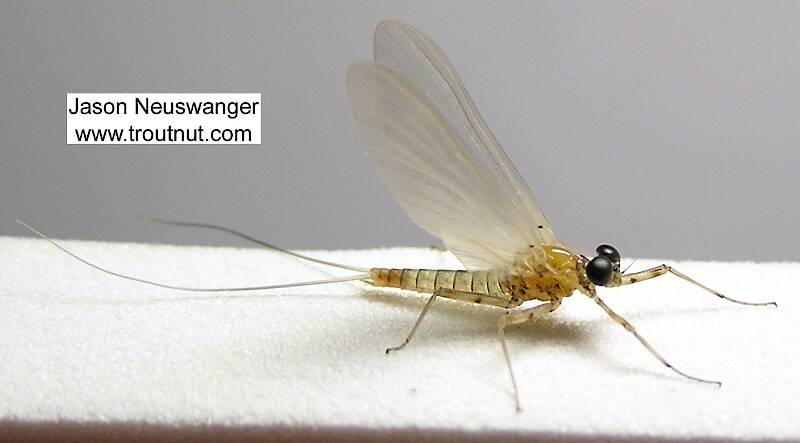
This is my favorite mayfly from 2004, and it appears on my popular Be the Trout: Eat Mayflies products. Check them out!
Its identification is really up in the air. It might be a late-season vitreus dun but it may very well be one of the more obscure species in that genus.
Its identification is really up in the air. It might be a late-season vitreus dun but it may very well be one of the more obscure species in that genus.
See 12 more specimens...

